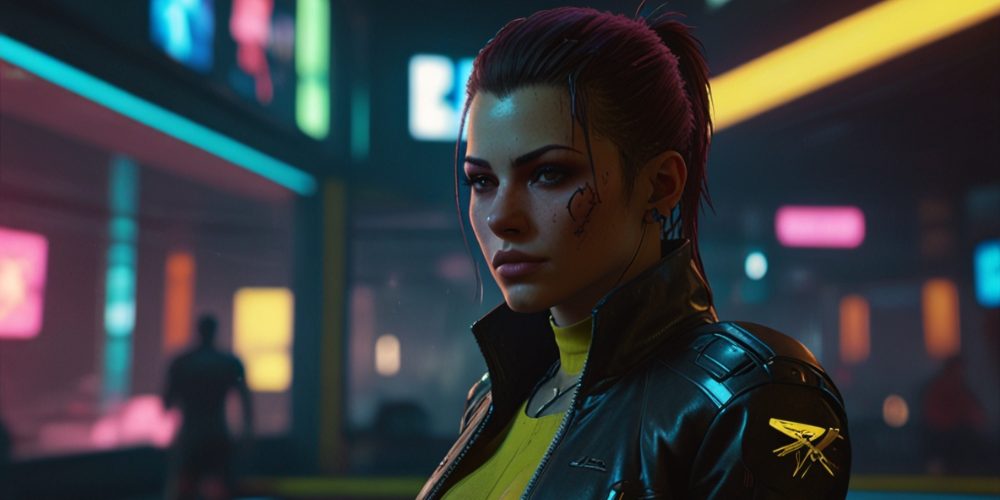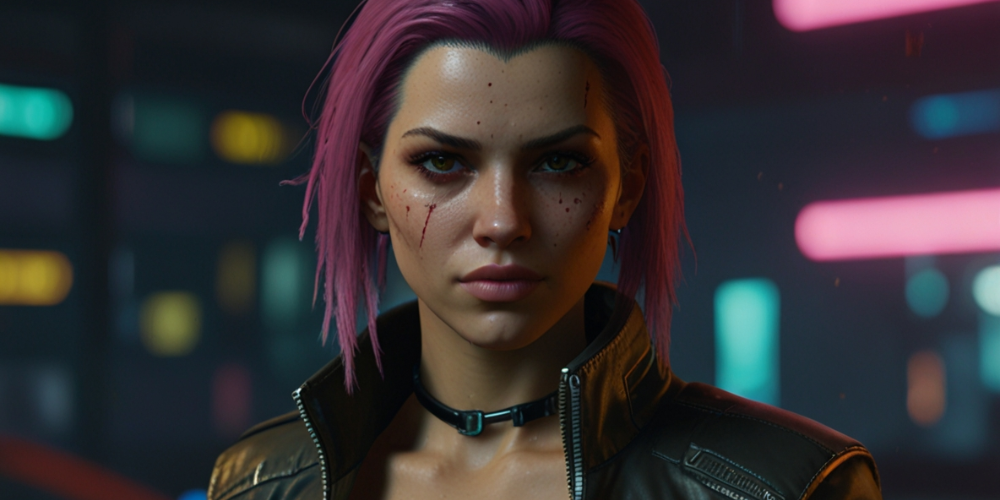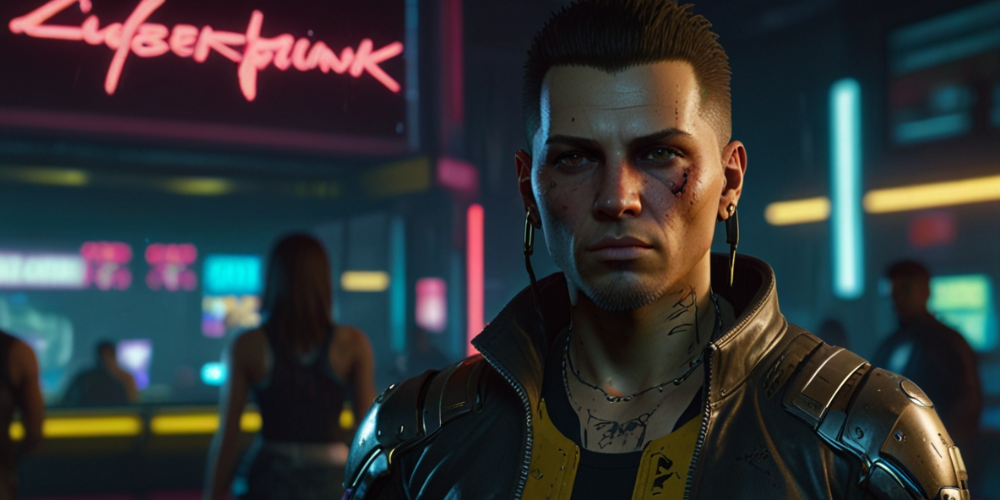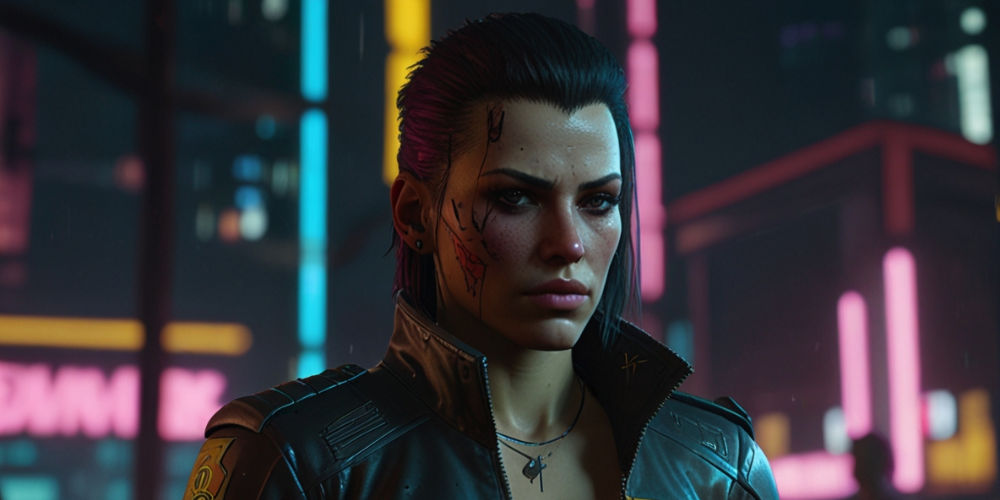Cyberpunk 2077 - Ambition vs. Reality in Game Development
- Jul 31, 2024
- 906

When I first heard about Cyberpunk 2077, my excitement was palpable. The promise of an expansive, immersive world filled with rich storytelling and intricate character development sounded like a breath of fresh air in a genre that often struggled to innovate. I remember watching the initial trailers, mesmerized by the stunning visuals and the promise of power, technology, and narrative depth. As a gamer, it felt like we were on the brink of a revolution in how games could be experienced. But the journey from ambition to reality is rarely straightforward.
The Hype Train Begins
Before the game was even released, the community was buzzing with anticipation. Every new trailer, every leaked image ignited discussions, debates, and theories. It felt like we were all part of something monumental. There was a sense of camaraderie among fans, sharing the same dream of diving into Night City, exploring its secrets, and becoming a part of its story. It was hard not to get swept up in the fervor; the ambition was contagious, and we all believed that CD Projekt Red was ready to deliver a masterpiece.
Unraveling the Ambition
The ambition behind Cyberpunk 2077 was evident. CD Projekt Red, fresh off the success of The Witcher 3, aimed to take on the cyberpunk genre with a modern twist. They promised not just a game but an all-encompassing digital experience—interactive and personal, filled with choices that would impact the world and its inhabitants. There was talk of NPCs with intricate storylines, a dynamic environment that would react to players’ decisions, and a sprawling metropolis that was alive, vibrant, and full of life.

A Microscopic Eye on Development
As development progressed, I began to dive deeper into the behind-the-scenes footage and developer diaries shared by the team. The sheer scale of what they were taking on was astonishing. From creating towering skyscrapers to the underbelly of the city, the attention to detail was extraordinary; each aspect felt meticulously crafted. However, whispers of challenges began to surface. The demands for such a massive project weighed heavily on the developers.
Promises of a Living World
One of the most captivating aspects of Cyberpunk 2077 was its promise of a living world. CD Projekt Red declared that players could interact with nearly everything in Night City. But did this vision match reality? What I expected was a world that responded to every decision I made, evolving in real-time based on my interactions. However, as fans began to speculate and scrutinize the available content, some concerns started creeping into discussions.
Delays and Expectations
As the release date drew closer, the team announced multiple delays. While some gamers embraced the postponements, hoping it meant a more polished experience, I could feel a heaviness settling in. Each delay felt like a tightening of the expectations surrounding the game. How much longer could they delay before the anticipation turned into frustration? The balance between ambition and the stark reality of development became more apparent with every postponed launch date.

Launch Day: Anticipation to Disillusionment
Finally, the fateful day arrived. I sat down, controller in hand, my excitement soaring. The first few hours were nothing short of magical; after traversing through the stunning visuals and engaging in a beautifully crafted narrative, I felt the weight of the universe wrapped around me. However, soon enough, the technical glitches began to emerge. Frame rate drops, bugs, and crashes started to detract from the immersion I had longed for. The ambitious vision felt overshadowed by the stark reality of the launch.
Technical Challenges Surface
As I dug deeper into the game, I noticed that the initial interactions—promised to be seamless and flowing—often ended up feeling jarring due to glitches. From characters disappearing mid-conversation to missions that simply wouldn’t trigger, I began to question how such a reputable studio could release a title so fraught with issues. The ambition was there, but the execution seemed to falter dramatically. It felt like the dream of building a perfect digital city had collided head-on with technical limitations.
Community Reactions
The reaction from the gaming community was swift and fierce. My social media feeds were flooded with everything from memes to angry posts about the myriad of issues players were facing. It was eye-opening to see how quickly dreams could turn into disenchantment. While I empathized with the developers, it was hard to ignore the sheer disappointment that so many felt. The contrast between our initial expectations and the reality of the experience created a rift in the community that was palpable.

CD Projekt Red's Response
In the wake of the backlash, CD Projekt Red took to platforms to address our concerns. I watched as they publicly acknowledged the issues, promising fixes and updates. I appreciated their transparency and commitment to making things right; seeing a studio willing to face the music was commendable. However, the road to redemption felt long. It became evident that repairing the damage required an exceptional amount of time and effort—far more than I could have anticipated.
A Journey of Updates and Fixes
In the following months, I saw a flurry of updates addressing the technical problems. The developers worked tirelessly to patch issues and improve performance. For many of us, it was a rollercoaster experience—one day, I would be thrilled with the improvements, and the next, I’d run into new bugs that frustrated me. The more I engaged with the game post-launch, the clearer it became that ambition alone doesn’t always equal success. The different facets of game development—design, technical capabilities, and community response—had all played a role in shaping the reality we witnessed.
Redefining Performance Expectations
As I continued to play, I noticed the developers altering their approach. They sought to redefine the standards by which they aimed to deliver updates. The more they worked on the game, the more it seemed clear they were learning from their missteps. Perhaps I started to grasp that part of the gaming experience was this journey—the push and pull between ambition and the reality of a living product. Each new patch provided glimpses of the expansive world they had envisioned, gradually bringing players closer to that initial dream.
The Role of Community Feedback
During this tumultuous period, the dialogue between the developers and the community became a focal point. I found a new appreciation for the feedback loop; a supportive community could help shape future updates. It felt revolutionary to witness the impact of direct player feedback, showing that our voices were heard. This connection became vital for the game's evolution; it was no longer just a monologue from the developers, but a collaborative discourse that encouraged growth and change.
Lessons in Sustainable Development
As I reflected on the entire experience, it became evident that the highs and lows of Cyberpunk 2077 highlighted essential lessons in game development. The interplay between ambition and reality can forge powerful narratives, both within the narrative of the game and behind the scenes. I now recognize that the journey of developing a game with such lofty aspirations requires balance—both in managing expectations and understanding limitations.
A Living Example of Growth
The evolution of Cyberpunk 2077 has taught me about resilience. Watching CD Projekt Red respond to feedback and continually improve the game offered a glimpse into what it means to grow as a studio. While the initial experience didn’t match expectations for many, the subsequent efforts showcased their determination to deliver on their promises. In this way, the game became a living example of how ambition, when coupled with humility and openness, can lead to real change and improvement.
The Future of Cyberpunk
As I look toward the future of Cyberpunk 2077, the possibilities excite me. The world, once riddled with issues, now feels filled with potential. There’s something to be said for a game that starts with a grand vision and slowly aligns it with reality through hard work and dedication. I can’t help but remain hopeful. Perhaps the most defining aspect of this journey lies in the continued evolution of the game itself. It’s now a testament to both the ambition of its creators and the power of its community.